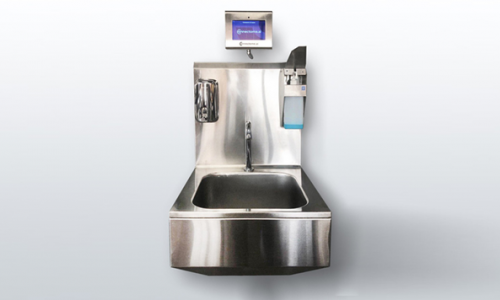Better safe than sorry
Five recommendations to prevent central venous catheter-related infections.
Catheter-related bloodstream infections are the third frequent infection in the intensive care unit (ICU) after pneumonia and peritonitis worldwide. The incidence of CVC infections lies between 1-4 for 1,000 catheterdays. This means for the USA, as an example, that more than five million patients annually need a central venous access, while 80,000 of them develop an infection.

Catheter-related bloodstream infections have been reported to occur in 3 to 8 % of inserted catheters and are the first cause of nosocomial bloodstream infection in ICUs. Attributable mortality rates ranges from 0 to 15%, depending on the degree of control for severity of illness.
‘The physiopathology of catheter infection is now more clearly understood. Colonisation of the endovascular tip of the catheter precedes infection and arises by two main pathways: the extraluminal and intraluminal routes’, explains Dr Olivier Mimoz, from the Surgical Intensive Care Unit at the Centre Hospitalier Universitaire, Poitiers, France.
The most common route of infection for short-term central venous catheters (CVCs) is the external route, the catheter tip being colonised at catheter insertion or subsequently by the migration of skin organisms from the insertion site. For long-term catheters the main cause of colonisation is manipulation of the venous line with migration of organisms along the internal lumen of the catheter. The best criterion defining a catheter infection is the evidence of bacteraemia. The question whether a catheter is infected, or not, can be answered after any other infectious complication has been ruled out.
The most secure way to gain certainty is to remove the catheter and send it to the laboratory for cultivation. If the catheter cannot be removed, microbiological samples are performed, blood cultures, for example, or a culture from the insertion site. ‘Many studies have shown that if the culture from the insertion site remains sterile the diagnosis of catheter infection can be ruled out.
The negative prediction value of this technique is very high – close to 100%’, he explains. The best way to prevent catheter infections is to use all the recommendations in a bundle, Dr Mimozadvises, giving five main recommendations:
1. The most important includes the use of a checklist to guide catheter insertion and maintenance.
2. When inserting a catheter, clinicians should use maximum sterilebarrier precautions, including a sterile mask/cap/gown/gloves and large sterile drapes.
3. The preference for a chlorhexidinebased solution skin antisepsis and cleaning hands with an alcoholbased
hand rub solution before any manipulation of the infusion line. In most of the studies, the superiority of chlorhexidines has been explained, at least in part, by a synergistic effect with alcohol, even for low chlorhexidine concentrations.
4. The subclavian vein being the vein with lesser infection risk should be preferred if there is no contraindication (severe respiratory failure, severe coagulopathy).
5. The need to reduce CVCs only to situations without any alternative. In many cases, a peripheral venous access or the enteral route can be used and CVCs that are no longer needed should be removed.
Catheter material is also an important determinant in the prevention of catheter-related infection. Catheters coated with antimicrobial or antiseptic agents decrease microorganism adhesion and biofilm production. ‘Considering their costs and their good safety profile, the large use of CVCs coated with chlorhexidine and sulfadiazine should be considered, especially in ICUs where the incidence of catheter-related infection remains high despite adherence to guidelines and recommended measures,’ according to Dr Mimoz.
Dressing is also an important issue: ‘Several studies have shown that the use of chlorhexidine-containing dressings reduce the risk of catheterrelated infections and catheter-related bloodstream infections, and that non-adherent dressings increase these risks; therefore, the use of these new devices should be encouraged, as the rapid change of every non-adherent dressings’.
Last but not least, educating and training medical teams who insert and maintain CVCs is essential for prevention: ‘In my opinion, all staff working around a patient should be concerned about avoiding catheter-related infections,’ Dr Mimoz points out. ‘The mentioned recommendations are valid as guidelines in all main countries, even if they have to be updated – like the French guidelines at the moment.’
22.02.2012











